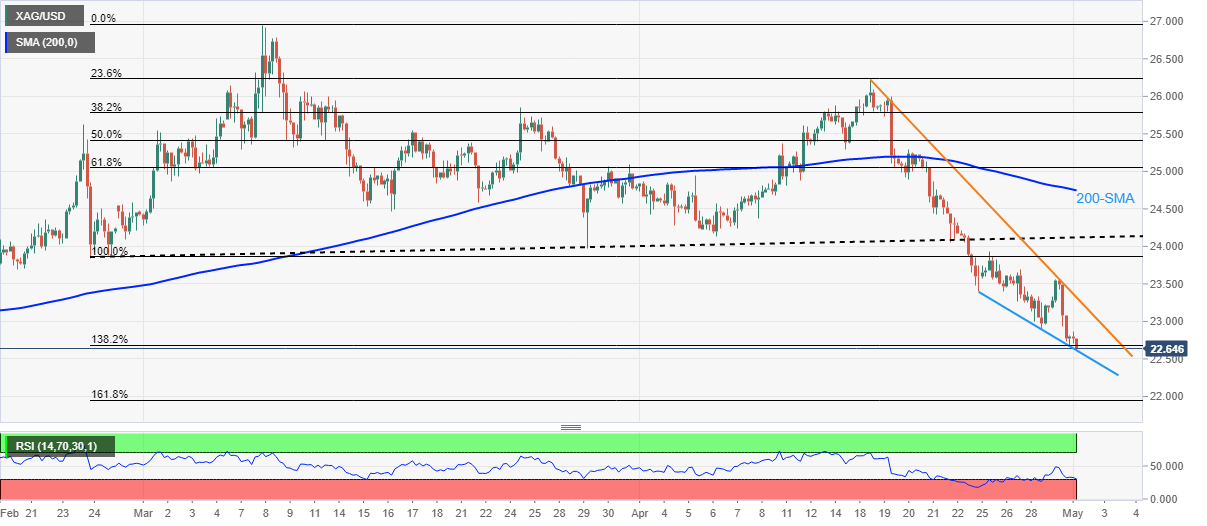Silver Price Analysis: XAG/USD renews three-month low under $23.00, RSI probes further downside
- Silver prices remain pressured for the eight consecutive days.
- Weekly support line and 138.2% Fibonacci retracement join oversold RSI conditions to test bears.
- Recovery moves remain elusive until the quote stays below $24.15.
Silver (XAG/USD) drops to the lowest levels since late February as it portrays the eight-day downtrend during Monday’s Asian session. That said, the bright metal prints 0.55% intraday losses as bears attack the $22.65-60 support zone at the latest.
A clear downside break of an ascending trend line from February 24 triggered the bright metals south-run during late April. The downside momentum also gained support from the sustained trading below the 200-SMA. However, oversold RSI conditions have triggered intermediate bounces of the XAG/USD.
The bullion’s latest weakness is also prone to a corrective pullback as RSI (14) turns down to 30.00. Also challenging the bears is the convergence of the 138.2% Fibonacci retracement of February 24 to March 08 upside and a one-week-old descending trend line near $22.65-60.
Even so, the recovery moves remain elusive until crossing the previous support line from late February, around $24.15 by the press time.
On an immediate basis, a downward sloping resistance line from April 18, close to $23.40 at the latest, can test the short-term rebound.
Alternatively, a downside break of the $22.60 will make the silver price vulnerable to testing the 161.8% Fibonacci retracement level surrounding $21.95.
Silver: Four-hour chart

Trend: Corrective pullback expected
